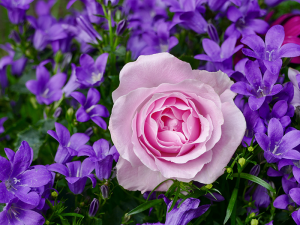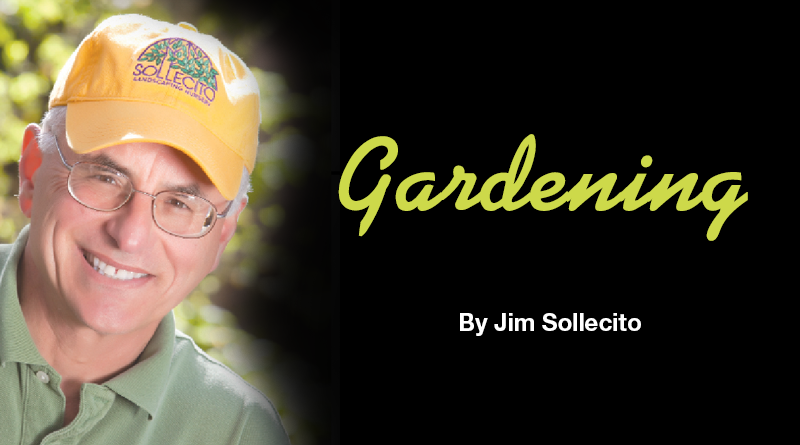Double Features
By Jim Sollecito

I am always on the lookout for plants that will stop traffic — and that discourage weeds, are not palatable to deer, require very little care and are reasonably priced.
If I can get four out of five of these criteria, then I have a winner.
Oh yeah, in an assortment of colors, preferably the berry colors. They always seem to put smiles on faces. And don’t forget yellow, which captures available light in cloudy environments — like Central New York. It’s the reason road signs are that color, so they can be easily seen under any conditions.
If something isn’t in flower right now, then your landscaping isn’t meeting its full potential. Probably you started with plants you liked, but things change as they age. It’s interesting that we don’t notice the change from day to day. But when you look farther back, everything is different than it once was. In a modern commercial orchard apple trees are excised after 20 years. They are replaced by new varieties with more features and, pardon the pun, appeal. You might think that trees are around forever, but nothing really is.
When it’s time for change, I like to design with double feature plants that glow in a crayon box full of color. Something that offers a neat flower, interesting fall color or a persistent fruit that creates winter interest. Newer named varieties of landscape roses, winterberries, dwarf spireas and weigelas are just some of the many possibilities. I also try to double crop an area, which means getting two out of the same plot. This form of intensification can really pack a wallop of color. This planting method becomes even more attractive when you learn it crowds out weeds. Notice this rose and the accompanying bellflower that are planted close enough to touch each other. This kind of dense planting discourages weed growth while giving a nice complimentary or contrasting color display.
An overlooked opportunity in many landscapes is around the light pole. This could be a real vertical focal point, instead of the usual drab color with an uninspired black fixture on top. Dull. Fresh options range from a coat of paint in a snappy color, a planting around that pole, or rest something interesting against it. And then plant around that. Maybe your home could benefit from all these techniques.
When first planning out an area, try to plant things that are friendly to pollinators, which I refer to as “flying flowers.”
Reduce or eliminate pesticide use in your landscape and incorporate plants that attract beneficial insects for pest control. Of course, you probably won’t have to even think about ever spraying chemicals that might harm pollinators if you: 1) place the right plant in the right location, 2) use plenty of organic compost and crab shell in the hole that you dug wide enough to allow for ample root growth, then 3) keep it watered until it becomes established.
Accept some minor plant flaws because life is not always about being perfect. But it is about being dynamic and allowing your personality to show in what you grow. Besides, planting today shows that you believe in tomorrow.
Jim Sollecito is the first lifetime senior certified landscape professional in NYS. He operates Sollecito Landscaping Nursery in Syracuse. Contact him at 468-1142 or jim@sollecito.com.

